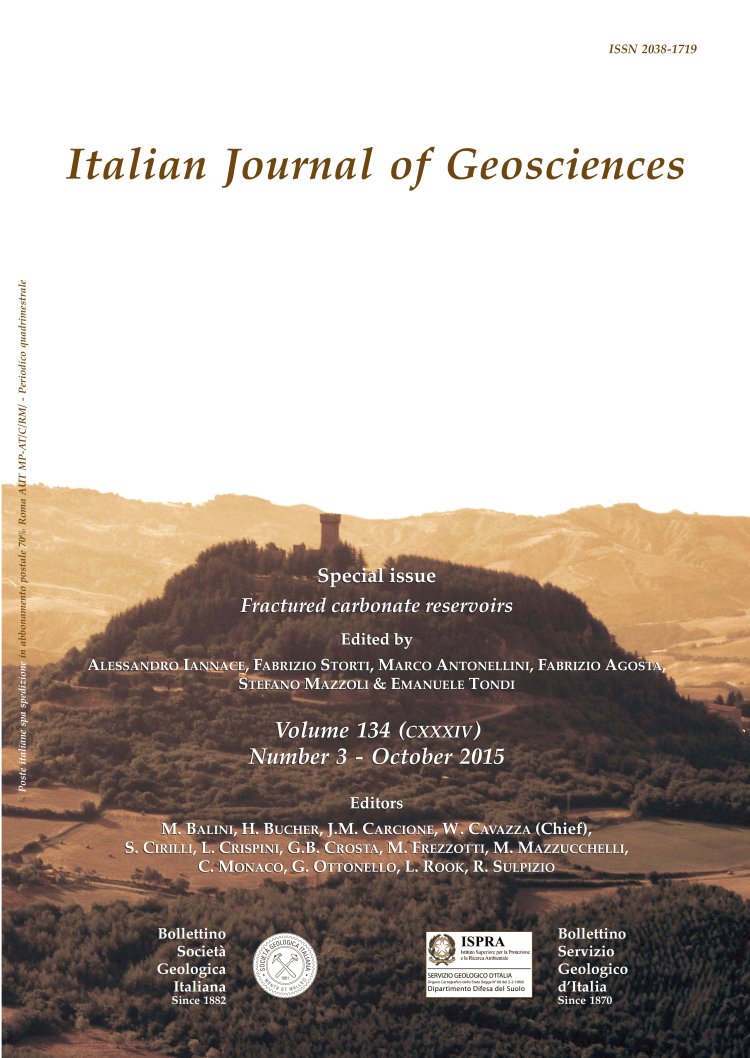
The role of mechanical stratigraphy on normal fault growth across a Cretaceous carbonate multi-layer, central Texas (USA)
Fabrizio Agosta (*), Christopher Wilson (**), (***) & Atilla Aydin (**)
(*) Dipartimento di Scienze, Università degli Studi della Basilicata, Potenza, Italy. Telephone number 0971-206176. Corresponding author e-mail: fabrizio.agosta@unibas.it
(**) Geological and Environmental Science Department, Stanford University, Palo Alto (California), USA.
(***) Currently at Chevron Corporate Upstream & Gas, Houston (Texas), USA.
Volume: 134 (2015) f.3
Pages: 423-441
Abstract
We present the results of an integrated field and laboratory investigation of the deformation mechanisms associated with nucleation and development of normal faults across heterogeneously layered Cretaceous carbonates. These results shed a new light on the role of partitioning of failure structures in the fault growth across such a carbonate multi-layer. Structural data show that the oldest structural elements consist of low-angle to bedding pressure solution seams, which formed during burial diagenesis of limestone rocks, such as wackestones, containing a large amount of carbonate mud.
Subsequently, we envision that normal fault nucleated due to shearing of these burial-related structures. Continuous slip along the sheared low-angle pressure solution seams localized fault-related dilation in the surrounding stiffer carbonate beds, which mainly consisted of packestones and dolostones. In particular, dilation localized within releasing jogs, as shown by the high frequency of high-angle to bedding splay joints. The splay joints were eventually
sheared during fault development due to fault-related bed tilting.
Linkage of the sheared elements originally compartmentalized within individual beds, which were characterized by variable cut-off angles, determined the observed scalloped vertical trace of the through-going normal faults across the carbonate multi-layer.
Subsequently, we envision that normal fault nucleated due to shearing of these burial-related structures. Continuous slip along the sheared low-angle pressure solution seams localized fault-related dilation in the surrounding stiffer carbonate beds, which mainly consisted of packestones and dolostones. In particular, dilation localized within releasing jogs, as shown by the high frequency of high-angle to bedding splay joints. The splay joints were eventually
sheared during fault development due to fault-related bed tilting.
Linkage of the sheared elements originally compartmentalized within individual beds, which were characterized by variable cut-off angles, determined the observed scalloped vertical trace of the through-going normal faults across the carbonate multi-layer.
Keywords
Get Full Text